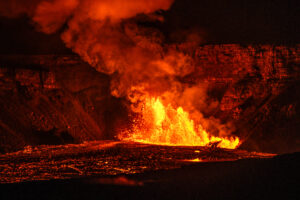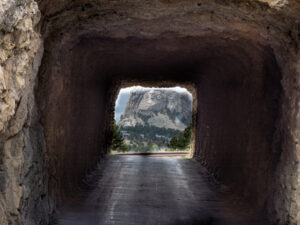This post is part of my 30-day U.S. road trip series, where I explore America’s most breathtaking national parks and landscapes. From the vibrant hues of the Badlands to the jagged peaks of the Rockies, every destination tells a story of natural beauty and adventure. This post is about Mount Rushmore. Click here to read other blog posts from this trip.
Why Mount Rushmore Took Me by Surprise as a Photographer
As someone who’s passionate about capturing untamed landscapes, I wasn’t initially thrilled about visiting Mount Rushmore. Man-made monuments rarely hold the same appeal for me as remote mountains or untouched forests. But travel has a way of humbling you — and this visit was a powerful reminder that beauty and inspiration can come from unexpected places.
A Monument to Vision and Ingenuity
Located in the heart of the Black Hills of South Dakota, Mount Rushmore is more than just an iconic American symbol. It’s a bold statement of artistry, perseverance, and national pride.
The monument features the 60-foot-high faces of four influential U.S. presidents — George Washington, Thomas Jefferson, Theodore Roosevelt, and Abraham Lincoln — all carved into the granite mountain. The sheer scale of the sculpture is staggering, but what truly captivated me was the story behind its creation.

The Story Behind the Stone
If you’re planning a visit, don’t miss the documentary at the Visitor’s Center. It shifted my entire perspective on the monument.
The project began in 1927, envisioned by sculptor Gutzon Borglum. He imagined a tribute to American ideals and history. After Gutzon Borglum died in 1941, his son Lincoln Borglum took over and completed the work. However, funding limitations prevented the team from finishing some elements of the original design — such as full busts and scrolls in the presidents’ hands.
Workers used dynamite to remove massive chunks of granite, then followed up with detailed handwork using chisels and jackhammers. The job was extremely dangerous, yet over 14 years of construction, only three workers lost their lives — a testament to their exceptional skill and courage.
Finding Unexpected Beauty
I didn’t expect Mount Rushmore to move me. But standing at the base of the monument, watching light and shadow play across the presidents’ faces, I experienced something rare — the same kind of awe I feel when photographing nature.
As the sun dipped lower, the granite seemed to come alive. Shadows danced across the contours, giving depth and emotion to the already impressive sculpture. It reminded me that artistry isn’t just confined to paint or photography — sometimes, it’s carved into stone over decades.

Photography Tips for Mount Rushmore
If you’re visiting Mount Rushmore with a camera in hand, here are a few tips for making the most of your experience:
- Golden Hour is Golden: Visit at sunrise or sunset for the best lighting. The soft light adds texture and drama to the monument.
- Use a Telephoto Lens: Capture close-up details of each face without needing to crop later.
- Explore Different Angles: Move around the park to find less common compositions — some of the best shots are from the Presidential Trail.
- Include Natural Elements: Framing the monument with trees or rock formations adds depth and a sense of place.
More Than a Monument: Exploring the Black Hills
The area surrounding Mount Rushmore is a destination in itself. Custer State Park, Needles Highway, and Spearfish Canyon offer stunning views, wildlife photography opportunities, and the kind of solitude I usually seek out on my travels.
Combining your visit to Mount Rushmore with a scenic road trip through the Black Hills is an ideal way to experience the full range of beauty — both natural and human-made — that South Dakota has to offer.
Final Thoughts: When Art Meets Landscape
Mount Rushmore challenged my expectations and reminded me that photography isn’t just about capturing what’s wild and untouched — it’s about storytelling. Mount Rushmore glows under the golden hour sun, its granite faces standing tall as a tribute to American history and craftsmanship. A must-see destination in South Dakota’s Black Hills.
If you’re a photographer, traveler, or history enthusiast, this landmark deserves a place on your itinerary. It may not be “off the beaten path,” but its impact is unforgettable.
📸 Plan Your Visit
- Location: Keystone, South Dakota
- Best Time to Visit: Early morning or late afternoon for optimal lighting
- Visitor Tip: Don’t skip the museum and the evening lighting ceremony



